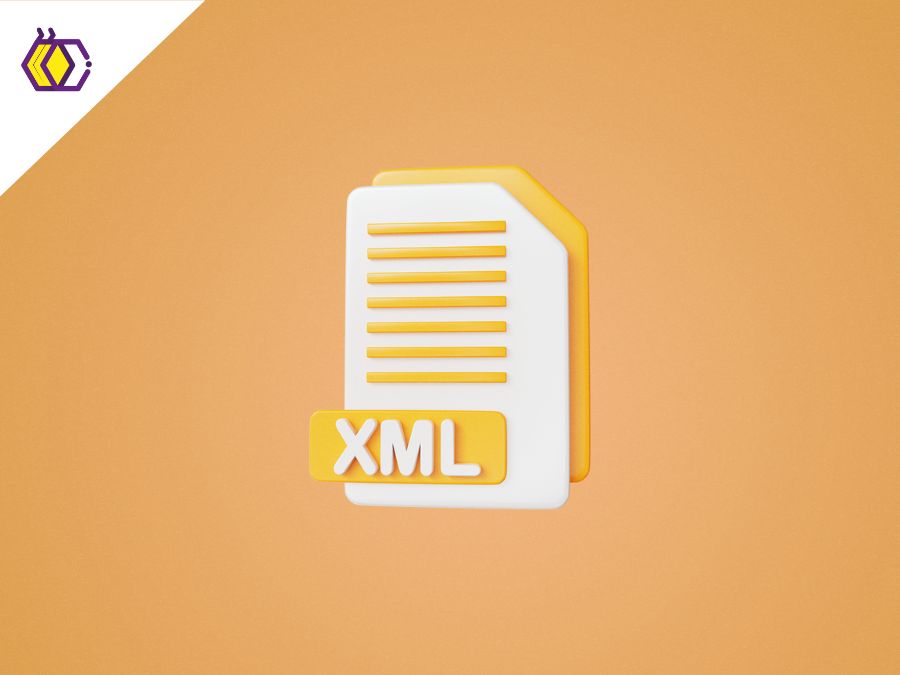

XML
(8 minutes of reading) Structured data exchange plays a key role in today's web, allowing different systems and applications to efficiently share information. In this context, XML (Extensible Markup Language) plays a crucial role. In this article, we will explore the concept of XML, its basic syntax, its importance in data exchange, and its applications in various industries. THE XML CONCEPT XML is an extensible markup language that allows you to create custom tags to markup data elements. Unlike HTML (Hypertext Markup Language), which is a predefined markup language for displaying content in browsers, XML does not have its own predefined tags. Instead, developers are free to create their own tags to describe the structure and content of the data appropriately for a specific application. XML was designed to be platform and language independent, which means that data can be shared and processed across different systems and environments. This flexibility makes XML a popular choice for exchanging data between different applications and systems. BASIC SYNTAX OF XML XML syntax is based on marking data elements with tags. Each tag consists of a name that describes the element and can contain a corresponding value. Elements can be nested within each other to create a hierarchical structure. For example, when describing information about a book, we can use tags such as ``, ` `, `<author>` and `<publicationyear>`. The `<book>` tag is the root tag that encompasses all information about the book. Child tags such as `<title> `, `<author>` and ` <publicationyear> ` are used to describe specific book attributes such as title, author, and year of publication. This hierarchical structure allows data to be organized in a logical and understandable way. Tags can be customized according to the application's needs, offering flexibility in defining the structure of the data. When creating an XML document, it is important to follow some basic syntax rules. Each tag must be opened with a less than sign (<) followed by the tag name. The tag is then closed with a greater than sign (>). The element's content is placed between the opening and closing tags. For example: <title>Don Quixote Miguel de Cervantes 1605 Note that the opening and closing tags must match, with the tag name preceded by a forward slash (/) in the closing tag. This simple, human-readable syntax is one of the advantages of XML. It allows data to be easily structured and understood by both humans and software applications. It is important to point out that XML does not have predefined tags like HTML. Developers have the freedom to create their own custom tags to describe the structure and content of the data, which makes the XML highly flexible and adaptable to different application scenarios and requirements. THE IMPORTANCE OF XML XML plays a key role in the efficient exchange of structured data across different platforms and programming languages. It provides a common framework for representing information, allowing diverse systems to share data efficiently. By using XML, information can be shared consistently regardless of operating system, application, or programming language. This makes XML a powerful tool for system integration, allowing different applications to seamlessly exchange data. In addition, the human readability of XML is a significant advantage. The XML files are structured in a clear and organized way, which facilitates the understanding and analysis of the data. This makes XML a popular choice for exchanging information between applications, as it simplifies debugging and code maintenance. XML SCHEMES AND DATA VALIDATION XML schemas are used to describe the expected structure of XML data. These schemas provide a formal definition that specifies which elements are allowed, what their attributes are, and how they should be formatted. This specification allows validating whether an XML document conforms to the expected structure. XML schemas are generally defined using the XML Schema Definition Language (XSD). They allow you to define specific rules and restrictions on data, ensuring that XML documents are consistent and correct. Validating XML documents against a schema is an important practice, as it ensures that the data is correct and conforms to the application's requirements. This helps to prevent errors and inconsistencies during data processing and improves the quality of data exchanged between systems. XML APPLICATIONS XML is widely used in many industries due to its ability to represent structured data. On the web, it is commonly used to transport data between different systems, such as when communicating between a web server and a client application. XML provides a standardized and flexible way to exchange information, allowing interoperability between heterogeneous systems. Additionally, XML is used in web services to facilitate communication between distributed applications. Data is encapsulated in XML messages, allowing different systems to communicate and exchange information efficiently. XML is also used to store structured data in databases or in configuration files. Many programming languages have libraries and APIs that make it easy to read and write XML data, making it a popular choice for persistent information storage. Another important application of XML is in the publishing industry, where it is used to create electronic book formats such as EPUB. XML allows content to be structured appropriately for readability across different devices and applications. XML LIMITATIONS While XML has many advantages, it also has some limitations to be aware of. Due to their text-based nature, XML files can be larger in size compared to more compact binary formats. This can result in increased disk space and bandwidth usage to transmit the data. Also, processing XML documents can be slower than more optimized data formats such as JSON (JavaScript Object Notation). This is because parsing and manipulating XML documents can require more CPU and memory resources. However, it is important to point out that the disadvantages of XML are often outweighed by the advantages of readability and widespread adoption. The human readability of XML facilitates application development and debugging, while the wide adoption of XML across industries ensures interoperability between systems. CONCLUSION XML is an extensible markup language that plays a key role in the efficient exchange of structured information on the web and across industries. Its simple syntax, schema-definability, and human-readability make it a popular choice for transporting and storing data. With its ability to facilitate communication between different systems and platforms, XML is a powerful tool for exchanging structured data and creating robust, interoperable applications. While XML has some limitations, its benefits outweigh these drawbacks, making it a reliable choice for exchanging data in many contexts. And there? What do you think of our content? Be sure to follow us on social media to stay up to date!
Share this article on your social networks:
Rate this article:
[yasr_visitor_votes size=”medium”]



